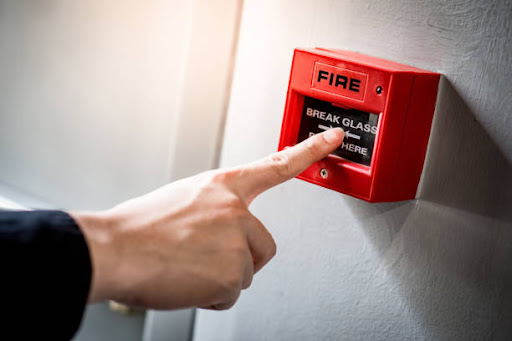
Safety is of the utmost importance in any facility, and an essential component of guaranteeing safety is the appropriate use of fire signs. During an emergency, fire signs are critical for directing inhabitants and assisting them in finding fire escapes, fire extinguishers, and other vital firefighting tools.
To guarantee uniformity and efficacy in fire sign application, governments and international organizations have set rules and standards. We will examine the main guidelines and requirements that control the placement of safety fire signs in buildings in this post.
What are Fire Safety Signs?
Fire safety signs are visual aids that convey essential information related to fire safety in buildings. These signs use instantly recognizable colors and symbols to give directions and instructions in an emergency.
Prohibition signs, warning signs, and required signs are the three primary categories of fire safety signs. Warning signs alert residents to potential hazards, while prohibition signs denote acts that are forbidden. Mandatory signs denote actions that are required.
Regulatory Bodies and Standards
Setting standards for fire safety signs requires collaboration among numerous regulatory bodies and standards bodies from throughout the globe. The most noticeable ones include:
- National Fire Protection Association (NFPA): The NFPA is a well-known organization that creates and disseminates numerous fire safety codes and standards. They have a special NFPA 170 standard that focuses on “Fire Safety and Emergency Symbols,” offering recommendations for the usage of standardized symbols in fire safety signs.
- The International Organisation for Standardisation (ISO) is a global organisation that creates and disseminates standards in a wide range of fields. ISO 7010, specifically, deals with “Graphical symbols — Safety colors and safety signs — Registered safety signs,” which includes fire safety signs.
- Occupational Safety and Health Administration (OSHA): Insuring workplace safety in the US is greatly aided by OSHA. OSHA compels employers to abide by the ANSI (American National Standards Institute) Z535 set of standards, which cover safety signs and colors, even though it does not have particular criteria for fire safety signs.
Types of Fire Safety Signs
Before delving into the regulations, let’s explore the various types of fire safety signs commonly used in buildings:
- Fire Exit Signs: Fire exit signs indicate the location of emergency exits that occupants should use to safely evacuate the building during a fire or other emergencies.
- Fire Extinguisher Signs: These signs highlight the location of fire extinguishers, enabling occupants to quickly find and use them in case of small fires.
- Fire Alarm Signs: Fire alarm signs help individuals locate fire alarm pull stations, which are essential for alerting others about a fire emergency.
- Fire Assembly Point Signs: These signs direct occupants to designated assembly points where they should gather after evacuating the building.
- No Smoking Signs: To prevent fire hazards, no smoking signs are displayed in areas where smoking is prohibited.
Key Regulations for Fire Safety Signs
- Size and Visibility: Regulations typically specify the minimum size and visibility requirements for fire safety signs. The signs must be large enough to be easily seen from a distance and placed at appropriate heights for maximum visibility.
- Illumination: Fire safety signs should be appropriately illuminated to remain visible in low light or smoky conditions. This can be achieved through emergency lighting or self-illuminating signs.
- Materials and Durability: The materials used for fire safety signs must be durable and capable of withstanding environmental factors like heat, moisture, and UV exposure.
- Placement and Location: Regulations often dictate the correct placement and location of fire safety signs. For example, fire exit signs should be installed above doors leading to escape routes, and fire extinguisher signs should be positioned near the extinguisher.
- Color and Symbols: Specific colors and symbols are designated for different types of fire safety signs. For instance, red is commonly used for fire-related signs, and a running man symbol indicates emergency exits.
- Compliance and Inspection: Building owners and occupiers have a responsibility to comply with the regulations and standards governing fire safety signs. Regular inspections are necessary to ensure the signs are in good condition, visible, and correctly placed. Any damaged or missing signs should be replaced promptly.
Conclusion
The implementation of safety fire signs in buildings is governed by various regulations and standards set forth by reputable organizations. These signs are critical in providing essential information during emergencies and guiding occupants to safety.
By adhering to the prescribed guidelines, building owners and occupants can contribute significantly to the overall safety of their premises and ensure swift and orderly evacuation during fire incidents. Regular inspections and maintenance further enhance the effectiveness of these life-saving signs.
Remember, in matters of safety, every precaution is worth taking, and fire safety signs play a crucial role in keeping people safe.